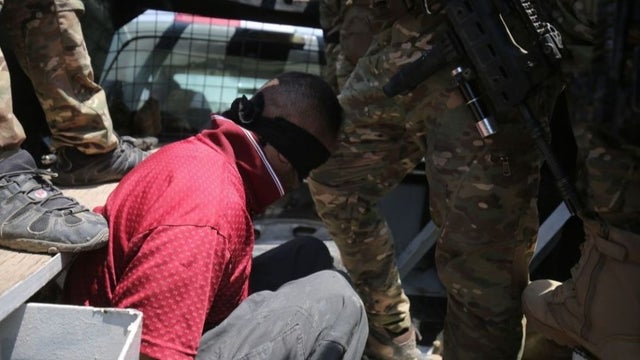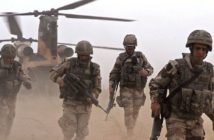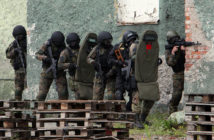The Hill
BY BRIAN GLYN WILLIAMS, OPINION CONTRIBUTOR
THE VIEWS EXPRESSED BY CONTRIBUTORS ARE THEIR OWN AND NOT THE VIEW OF THE HILL
For all of its territorial losses, and despite President Trump’s boasts that we have “wiped out” ISIS, the terror group has demonstrated a phoenix-like ability to reconstitute itself from a mere 700 surviving fighters at the time of President Obama’s withdrawal of U.S. troops from Iraq in 2011. It is far from being completely defeated or obliterated.
The Pentagon has estimated the terrorist group has as many as 30,000 followers and has reverted to its roots as a deadly guerrilla insurgency. The United Nations agreed with the Pentagon’s estimate of ISIS fighters remaining in Iraq and Syria, and found that ISIS’s affiliates in Afghanistan, Libya and the Sinai also had 4,000, 3,000 and 1,000 hardcore fighters, respectively. Most worryingly, ISIS reportedly has set up fallback bases in the remote highlands to the southeast of Mosul, Iraq, in the Qara Chokh, Hamrin, and Makhmour Mountains.
ISIS members are carrying out sleeper cell terror attacks in Iraq and Syria, including the systematic killing of pro-government Iraqi elders, setting off massive car bombs, ambushing Shiite militias, dressing up as government troops at fake checkpoints and executing government employees, wiping out Iranian convoys in Syria, massacring pro-government villagers in Syria, killing Syrian Army troops in ambushes, reconquering lands in central Syria, suicide bombing allied Kurdish Syrian Democratic Force fighters and Kurdish intelligence operatives.
Now, ISIS fighters have taken to burning the crops of their enemies in northern Iraq and gloating in their online website, stating, “It seems that it will be a hot summer that will burn the pockets of the apostates as well as their hearts as they burned the Muslims and their homes in the past years.”
ISIS’s dark tendrils still extend abroad as well. In December 2018, the terrorist group inspired the killings of tourists in lands as far flung as the Atlas Mountains of Morocco and the Pamir Mountains of Tajikistan. In Morocco, two Scandinavian women campers were filmed having their throats slit and being decapitated by gloating ISIS supporters. This followed an attack four months earlier in which ISIS supporters in Tajikistan plowed their car into a group of American and European globetrotting cyclists on a mountain road, killing three before doing a U-Turn and driving back to stab and shoot injured survivors.
But post-caliphate ISIS’s bloodiest attack occurred in Sri Lanka on Easter 2019. ISIS affiliate terrorists attacked Christians in their churches and hotels, killing 253. It was ISIS’s deadliest terror attack to date, and the fact that it took place after the fall of the caliphate in March 2019 sparked fears that ISIS would be enacting its declared global “Campaign of Vengeance for the Blessed Province of Syria.”
As ISIS’s dream of a caliphate collapsed in 2016, its chief spokesman lashed out defiantly, stating: “Do you think, O America, that victory is achieved by the killing of one commander or more? It is then a false victory. … Victory is when the enemy is defeated. Do you think, O America, that defeat is the loss of a city or a land? Were we defeated when we lost cities in Iraq and were left in the desert without a city or a territory? No; defeat is the loss of willpower and desire to fight.”
This spring, ISIS leader Caliph al Baghdadi told his followers: “Our battle today is one of attrition and stretching the enemy. They should know that jihad is ongoing until the day of judgment.” His dedicated “forever warriors” do not define their movement strictly by the towns or provinces they control. They have reverted to being “shadow warriors” who believe they are fighting an endless war of terroristic attrition.
Having learned not to make themselves targets for bombing by U.S. aircraft by trying to defend physical turf, ISIS’s remaining band of warriors have returned to the shadows. They define their defeat as a test of the faith. Their warriors have transitioned from planting black flags of conquest and ruling millions to waging a shadow war — a Taliban-style, grinding campaign designed to wear down their enemies from across the globe. It remains to be seen whether or not the Trump administration is as committed as ISIS is to this civilizational struggle.
Brian Glyn Williams is a professor of Islamic history at the University of Massachusetts-Dartmouth and the author of “Counter Jihad. The American Military Experience in Afghanistan, Iraq and Syria” (2018). He worked in Afghanistan for the U.S. Army and CIA’s Counterterrorism Center. Follow him on Twitter @BrianGlynWillms.







